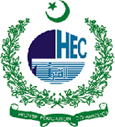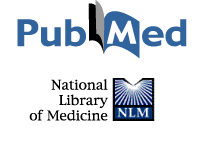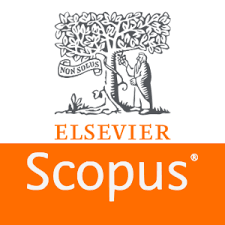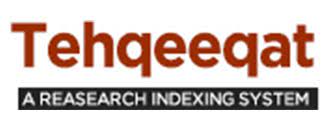EARLY OUTCOMES OF WILMS TUMOR SURGERY IN CHILDREN TREATED WITH PRE-OPERATIVE CHEMOTHERAPY: AN EXPERIENCE FROM CANCER DEDICATED CENTER
DOI:
https://doi.org/10.55519/JAMC-01-13062Keywords:
Wilms Tumour; Children; Pre-operative chemotherapy; NephrectomyAbstract
Background: In recent times’ advances in surgical technique and chemotherapy resulted survival rate in Wilms tumour patients approaching 90%. Therefore, the study aimed to assess the efficacy of preoperative chemotherapy and to document the early postoperative surgical and oncological outcomes. Methods: The patients with Wilms tumour were reviewed who underwent radical nephrectomy from April 2020 to May 2023. Factors related to demographics, radiological findings, treatment provided, response to chemotherapy, and short-term outcomes were assessed. Mean and standard deviations were used to describe categorical data while frequencies and proportions were used to describe quantitative data. Results: Ninety patients with Wilms tumour received pre-operative chemotherapy and underwent radical nephrectomy with a mean age of 3.35±2.20 years. The majority of the patients presented within three months of the onset of the symptoms (81.0%) and the common symptom was abdominal mass (77.7%). Most of the patients were lying in the intermediate-risk stratification group (70.0%). The mean operative time was 2.02±0.75 hours. The mean high dependency unit (HDU) stay was 1.57±1.31 days and the mean hospital stay was 3.47±1.14 days. Furthermore, surgical complications were reported in nine (10%) patient, and four patients had early relapse, and two expired. There was a statistically significant chemotherapy response in terms of tumour size (pre-chemotherapy 9.6±3.29 cm versus post-chemotherapy tumour size 7.1±2.8 cm). Conclusions: Despite the delayed presentation and large volume of tumours, the initial results are favourable. Additionally, preoperative chemotherapy has played a crucial role in reducing tumour size and enabling successful surgical removal.
References
1. Brok J, Treger TD, Gooskens SL, Van Den Heuvel-Eibrink MM, Pritchard-Jones K. Biology And Treatment Of Renal Tumours In Childhood. Eur J Cancer 2016;68:179–95.
2. John R, Kurian JJ, Sen S, Gupta Mk, Jehangir S, Mathew LG, et al. Clinical Outcomes Of Children With Wilms Tumour Treated On A Siop Wt 2001 Protocol In A Tertiary Care Hospital In South India. J Pediatr Urol 2018;14(6):547.e1.–547.e7.
3. Kieran K, Ehrlich PF. Current surgical standards of care in Wilms tumour. Urol Oncol 2016;34(1):13–23.
4. Nyakundi Nk, Musau P, Saula P. Early Surgical Outcomes Of Children With Wilms’tumour At A Teaching Hospital In Western Kenya. MedRxiv 2020;4:2020–7.
5. Hall G, Grant R, Weitzman S, Maze R, Greenberg M, Gerstle JT. Predictors Of Surgical Outcome In Wilms’ Tumour: A Single Institution Comparative Experience J Pediatr Surg 2006;41(5):966–71.
6. Ehrlich PF, Hamilton TE, Gow K, Barnhart D, Ferrer F, Kandel J, et al. Surgical Protocol Violations In Children With Renal Tumours Provides An Opportunity To Improve Pediatric Cancer Care: A Report From The Children's Oncology Group. Pediatr Blood Cancer 2016;63(11):1905–10.
7. Khan MR, Maaz AU, Ashraf MS. Challenges In The Management Of Wilms Tumour In A Developing Country: A Twenty Years’ Experience From A Single Center In Pakistan. J Pediatr Hematol Oncol 2022;44(8):454–61.
8. Vujanić GM, Gessler M, Ooms AHAG, Collini P, Coulomb-l'Hermine A, D'Hooghe E, et al. The UMBRELLA SIOP-RTSG 2016 Wilms Tumour Pathology and Molecular Biology Protocol. Nat Rev Urol 2018;15(11):693–701.
9. Miller SD, Andrassy RJ. Complications In Pediatric Surgical Oncology. J Am Coll Surg 2003;197(5):832–7.
10. Njuguna F, Martijn HA, Kuremu RT, Saula P, Kirtika P, Olbara G, et al. Wilms tumour treatment outcomes: perspectives from a low-income setting. J Glob Oncol 2017;3(5):555–62.
11. Wilde JC, Lameris W, Van Hasselt EH, Molyneux EM, Heij HA, Borgstein EG. Challenges and outcome of Wilms′ tumour management in a resource-constrained setting. Afr J Paediatr Surg 2010;7(3):159–62.
12. Yao W, Li K, Xiao X, Gao J, Dong K, Xiao X, et al. Outcomes of Wilms’ tumour in eastern China: 10 years of experience at a single center. J Invest Surg 2012;25(3):181–5.
13. Farooq U, Qazi AQ, Malik AA. Short term surgical outcomes of Wilms tumour from a single institute. J Pak Med Assoc 2018;68(7):1129–31.
14. Pastore G, Znaor A, Spreafico F, Graf N, Pritchard-Jones K, Steliarova-Foucher E. Malignant renal tumours incidence and survival in European children (1978–1997): report from the Automated Childhood Cancer Information System project. Eur J Cancer 2006;42(13):2103–14.
15. Nakata K, Colombet M, Stiller CA, Pritchard-Jones K, Steliarova-Foucher E, IICC-3 contributors. Incidence of childhood renal tumours: an international population‐based study. Int J Cancer 2020;147(12):3313–27.
16. Charlton J, Irtan S, Bergeron C, Pritchard-Jones K. Bilateral Wilms tumour: a review of clinical and molecular features. Expert Rev Mol Med 2017;19:e8.
17. Sarin YK, Bhatnagar SN. Wilms’ tumour-roadmaps of management. Indian J Pediatr 2012;79:776–86.
18. Fuchs J, Kienecker K, Furtwängler R, Warmann SW, Bürger D, Thürhoff JW, et al. Surgical aspects in the treatment of patients with unilateral wilms tumour: a report from the SIOP 93-01/German Society of Pediatric Oncology and Hematology. Ann Surg 2009;249(4):666–71.
19. Hadley GP, Shaik AS. The morbidity and outcome of surgery in children with large pre-treated Wilms’ tumour: size matters. Pediatr Surg Int 2006;22(5):409–12.
20. Ritchey ML, Kelalis PP, Etzioni R, Breslow N, Shochat S, Haase GM. Small bowel obstruction after nephrectomy for Wilms' tumour. A report of the National Wilms' Tumour Study-3. Ann Surg 1993;218(5):654–9.
21. Habti M, Miyata S, Côté J, Krauel L, Piché N. Bowel obstruction following pediatric abdominal cancer surgery. Pediatr Surg Int 2022;38(7):1041–5.
Downloads
Published
How to Cite
Issue
Section
License
Copyright (c) 2025 Sajid Ali, Talha Javed, Areej Muhammad Salim, Tariq Latif, Muhammad Ali Sheikh

This work is licensed under a Creative Commons Attribution-NoDerivatives 4.0 International License.
Journal of Ayub Medical College, Abbottabad is an OPEN ACCESS JOURNAL which means that all content is FREELY available without charge to all users whether registered with the journal or not. The work published by J Ayub Med Coll Abbottabad is licensed and distributed under the creative commons License CC BY ND Attribution-NoDerivs. Material printed in this journal is OPEN to access, and are FREE for use in academic and research work with proper citation. J Ayub Med Coll Abbottabad accepts only original material for publication with the understanding that except for abstracts, no part of the data has been published or will be submitted for publication elsewhere before appearing in J Ayub Med Coll Abbottabad. The Editorial Board of J Ayub Med Coll Abbottabad makes every effort to ensure the accuracy and authenticity of material printed in J Ayub Med Coll Abbottabad. However, conclusions and statements expressed are views of the authors and do not reflect the opinion/policy of J Ayub Med Coll Abbottabad or the Editorial Board.
USERS are allowed to read, download, copy, distribute, print, search, or link to the full texts of the articles, or use them for any other lawful purpose, without asking prior permission from the publisher or the author. This is in accordance with the BOAI definition of open access.
AUTHORS retain the rights of free downloading/unlimited e-print of full text and sharing/disseminating the article without any restriction, by any means including twitter, scholarly collaboration networks such as ResearchGate, Academia.eu, and social media sites such as Twitter, LinkedIn, Google Scholar and any other professional or academic networking site.










